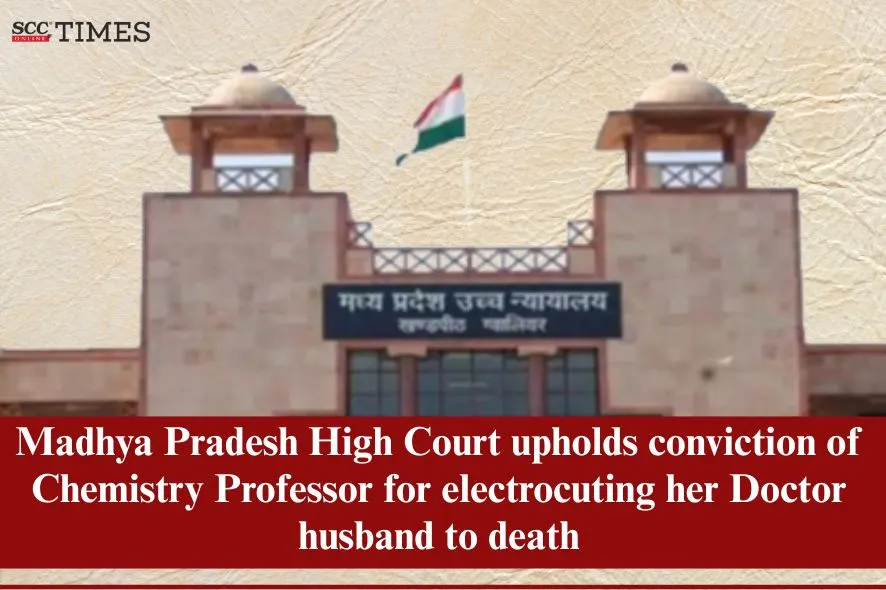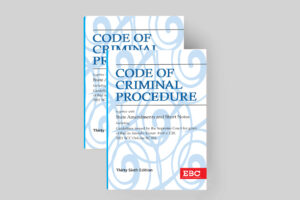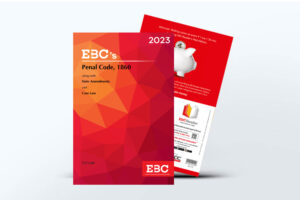Madhya Pradesh High Court: In a criminal appeal filed by a wife, Assistant Professor of Chemistry, who was convicted by the Trial Court for the murder of her husband and sentenced to rigorous imprisonment for life, the Division Bench of Vivek Agarwal* and Devnarayan Mishra, JJ., rejected the appeal holding that the chain of circumstances had been completed and the guilt of the wife had been proved beyond reasonable doubt by the prosecution.
Background
The wife, a 63-year-old Assistant Professor of Chemistry, informed the police of the death of her husband, a 65-year-old doctor, and the police registered a merg report (‘initial report’) under Section 174 of the Criminal Procedure Code, 1973 (‘CrPC’). After investigation and receipt of the post-mortem report, which stated that the deceased died due to electrocution, the police lodged an FIR against the wife under Section 302 of the Penal Code, 1860 (‘IPC’).
Ultimately, the Trial Court convicted the wife under Section 302 of the IPC and sentenced her to rigorous imprisonment for life along with a fine of Rs 10,000.
Aggrieved, she filed the present appeal.
Issues and Analysis
1. Delay in lodging FIR and transmitting it to Court
At the outset, the Court noted that as per the prosecution and post-mortem report, the death occurred on 29-04-2021. On that day, the deceased had called Prosecution Witness 4 (‘PW’) at 11:51 AM complaining about his wife having locked him in a bathroom and not providing food for two to three days. PW 4 complained to the police and sent his son along with his friend to free the deceased. At 12:54 PM, when PW4 called the deceased, he informed that he had been freed from confinement by the police. The deceased also gave a written complaint to the police about the harassment meted out to him. Later that night, when PW4 called the deceased, his call went unanswered.
The Court further noted that on the next day, on 30-04-2021, the wife, along with her elder son, visited Jhansi for a day for her dialysis. However, as per the driver PW12, the dialysis was not performed, the wife could not trace the doctor she wanted to meet, and on the way to Jhansi, she gave a bag to her mother at Harpalpur.
The Court also noted that the chowkidar was informed by the elder son that the deceased had passed away the morning of 01-05-2021. Soon after, the police were informed and the complaint was recorded on the instance of the wife. In the wife’s statement recorded in the initial report, when she went to the deceased’s room on 29-04-2021, he was lying on his bed and did not respond to her. When she checked his pulse, she found out that her husband had died. She also admitted that she had taken her elder son and driver to Jhansi on 30-04-2021 for dialysis treatment and returned at night. She added that she visited the police station on 01-05-2021 to report the matter. She claimed that she did not know how her husband died. This report was duly signed by the wife.
Thereafter, the Court noted that the post-mortem was conducted on the same day, and the report stated that the cause of death was shock due to cardio-respiratory failure as a result of an electric current at multiple sites. The duration of death was 36 to 72 hours before post-mortem.
The Court also took notice of the fact that the FIR was lodged by PW14 against an unknown person on 06-05-2021 under Section 302 of the IPC based on the initial report on the same day after completion of the investigation.
Furthermore, the Court noted that on 08-05-2021, the wife gave her memorandum (‘the memorandum’) admitting that she had given an electric current to her husband after making him consume Olanzapine tablets (an atypical antipsychotic drug used for treating mania and schizophrenia). Accordingly, one strip of tablets, which had 4 out of 6 tablets missing, was seized along with an 11-meter-long red and blue electric wire, which had a two-pin plug on one end, whereas the other end was naked.
Thus, the Court held that the issue of delay was explained since the initial report was recorded against an unknown person, an investigation was conducted, and the report was ultimately received by PW14, who recorded the FIR on the same day. Further, the Court stated that other than the information mentioned in the initial report and correlation with the circumstances, there was nothing else mentioned in the FIR. Thus, it could not be said that the FIR was manipulated.
Hence, the Court held that it could not be said that there was any inordinate delay in lodging the FIR because the FIR was lodged only after completion of the initial investigation.
Thus, the Court held that it was evident that when the FIR was based on the initial report and there was no allegation of it being ante-timed or antedated or manipulated, such an allegation without any substance cannot frustrate the investigation and the consequential proceedings.
Hence, the Court decided this issue against the wife.
2. The memorandum wherein the wife admitted to electrocuting the deceased was not obtained in custody and her signatures on the inquest report were obtained forcefully on the previous night, i.e., 07-05-2021.
The Court noted that the wife had contended that she was arrested hours after the memorandum was recorded; thus, the memorandum was not admissible under Section 27. Additionally, since the memorandum was involuntary, it was violative of Article 20(3) of the Constitution; hence, it was inadmissible.
The Court reiterated that the meaning of the words ‘custody’ and ‘arrest’ are to be seen in different connotations, and as per Section 46(1) of the CrPC, the appellant was already in custody when she gave the memorandum under Section 27 of the IEA. Therefore, it could not be said that the memorandum or the consequential proceedings were defective because the arrest was made at 01:10 PM while the memorandum was obtained at 11:00 AM. In this regard, the Court referred to State of Bihar v. Madanlal Agarwalla, 1965 SCC OnLine Pat 118, Mussammat Aishan Bibi v. Crown, 1933 SCC OnLine Lah 638, and State of Assam v. Upendra Nath Rajkhowa, 1974 SCC OnLine Gau 43.
The Court also noted that there was no allegation about any compulsion. Further, the Court remarked that the wife was making two contradictory arguments; on one hand, that her memorandum was not admissible as it was hit by Article 20(3), and on the other hand, that since she was arrested after obtaining the memorandum, it was not admissible in the light of the law laid down in State of Bombay v. Kathi Kalu Oghad, 1961 SCC OnLine SC 74.
Regarding the applicability of Article 20(3), the Court placed reliance on Collector of Customs v. Calcutta Motor and Cycle Co., 1958 SCC OnLine Cal 53, wherein it was held that Article 20(3) of the Constitution will be available only to a person who has been formally accused or charged. So long as the person is not compelled to answer a question whereby they may incriminate themselves, or compelled to produce an incriminating document, they cannot complain that they have been asked to appear before the Authorities or to produce documents. Thus, the Court stated that it was evident that while giving a memorandum, there was no compulsion available against the wife to record it and, therefore, the provisions of Article 20(3) would not be applicable.
Regarding the wife’s contention that her signatures were forcefully obtained on the Merg Inquest Report the night before her arrest, and her reliance on PW13, who recorded the report, the Court stated that, as per PW13’s testimony, it could not be made out that he obtained her signatures on the alleged night of 07-05-2021.
As far as her testimony was concerned, the Court noted that while she admitted that the police had obtained her signatures under pressure, she also admitted that she was literate and working as an Assistant Professor of Chemistry. The Court remarked that saying that her signatures were obtained under pressure and explaining that they were obtained seven days after the recording of the inquest were two different things. She had very cleverly tried to cover up by saying that the admission, which had already come on record in the form of signatures on the inquest, was obtained under duress after seven days. The Court rejected the contention, holding that there was no material to support it.
Thus, the Court held that there was no infirmity in the recording of the memorandum and the following proceedings.
3. Lapses in post mortem report
The Court noted that the wife contended that there are several lapses in the post-mortem report, which were answered as follows:
1. Non-identification of the body before post-mortem
In this regard, the Court noted the following facts:
- Firstly, the wife went upstairs in the house on 01-05-2021 and saw the body of her husband.
- Secondly, she called a doctor who refused to do a home visit due to the COVID-19 pandemic, but recommended that she call the police.
- Thirdly, on the doctor’s advice, she asked her elder son to call the police.
- Fourthly, the police came, but the wife refused to accompany them upstairs, citing ill health.
- Fifthly, the police went upstairs with the chowkidar. They filled the crime form, and the chowkidar signed it.
-
Sixthly, the wife and son admittedly received the body after the post-mortem.
Noting the aforesaid, the Court held that the wife knew that the body was taken for a post-mortem.
2. Closed mouth of the body
Regarding the contention that the dead body’s mouth was closed despite it being impossible as per medicine, the Court noted that one of the three doctors who conducted the post-mortem was not cross-examined about why the mouth was shown as closed, contrary to PW3’s deposition and initial report, which mentioned that the mouth was partially open and teeth were visible. However, the Court held that this issue should have been taken up with the post-mortem authorities, and since it was not done so, the contention had lost its importance.
3. The post-mortem was not conducted by the required panel of doctors.
The Court also rejected the contention that the post-mortem was not conducted by three doctors, as PW1 admitted that he was a member of the panel of three doctors who conducted the post-mortem. Additionally, this issue was not raised by the wife before PW1.
4. Incorrect duration of death
Furthermore, the Court rejected the contention that the duration of death was incorrect, as the body would have decomposed significantly in the summer temperature, and the electric burn injuries would not be as visible, but the post-mortem report stated that the deceased had passed 36-72 hours prior.
The Court noted that as per PW1’s testimony (one of the doctors who conducted the post mortem), he was not cross-examined about the decomposition of the body, the duration of the post mortem, change of colour of the body, formation of foul-smelling gases, and the availability of cooler in the room where the deceased passed which could have accelerated the decomposition. Additionally, there was no challenge to his finding that the death had occurred between 36 and 72 hours.
The Court further noted that the timing of 36 hours was corroborated by the initial report wherein the wife admitted that she discovered her husband’s dead body on 29-04-2021 at about 9:00 PM, as the post-mortem was conducted approximately 36 hours later on 01-05-2025 at around 3:30 PM. Therefore, the Court rejected the contention that lividity or a red/blue spot on the body of the deceased indicated that the death had occurred within 6 to 12 hours.
The Court remarked that interestingly, a lot of emphasis had been placed on the testimony of Defence Witness 2 (‘DW’), a doctor, but he did not exhibit any medico-legal document or expert opinion of any author before the Trial Court. Therefore, the Court held that his admission that electric injury marks were impossible to notice even after rigor mortis passing off, left no doubt that the wife was beating around the bush without putting any of the suggestions to PW1.
5. No electron microscopy was conducted on the deposition of metal particles into the skin/tissue.
The Court held that this contention had no relevance because of two facts:
- No suggestion was made to PW1 during cross-examination that, in the absence of scanning of skin through electron microscopy, it was not possible to say that the burns were caused by an electric current, and
-
Even DW2 did not say that, without electron microscopy, a finding of electric burns could not be given.
6. The house was insulated, so there could not be an exit wound, as the circuit could not have been completed, and the deceased could not have died from an electric current.
The Court stated that firstly, the theory of the functioning of the RCCB and the house being completely insulated was not proved. This was for three reasons: firstly, earthing will not function in the absence of an earthing wire connected to the device. Secondly, the RCCB can be manipulated, and thirdly, there was medico-legal evidence of an exit wound of electric current through the scrotum, which showed that earthing had taken place. Thus, the theory of the dead body being found on the bed with legs on a plastic chair was not sufficient to hold that, after earthing had taken place, the dead body could not have been placed in the position it was lying. The Court added that even otherwise, there was evidence of seizure of a strip of Olanzapine Tablets, which was proved through the medical report opining that the viscera material contained Olanzapine.
Therefore, this contention was also rejected.
4. The deceased was suffering from cardiovascular disease and, therefore, his death was on account of such disease.
In this regard, the Court noted that the deceased had been suffering from cardiovascular disease since 2007. However, the Court also took note of the statement of DW2 wherein he explained that the death which occurs due to suffocation leads blood to be fluid for a long time, the changes in the body are slow, and the clotting is not instantaneous. He further admits that, on being electrocuted, the heartbeat or breath can stop, which depends on the quantum of voltage. Additionally, even after 36 hours, though it is difficult to identify the electric injury marks, it is not impossible.
Noting the aforesaid, the Court held that undoubtedly, the cardiovascular disease was not the cause of death, but the cardiovascular failure resulting from electric shock was the cause of death. Thus, this issue was also decided against the wife.
5. The evidence, both oral and electronic, was not corroborated to the point that the guilt was that of the wife alone. It was a case of circumstantial evidence, and the chain of circumstances was not complete; therefore, the guilt of the wife could not be said to be established.
At the outset, the Court rejected the contention that the wife had been falsely implicated by the relatives of her husband in the greed for her husband’s property because she had two sons, who were Class I heirs of the deceased.
Thereafter, the Court examined witness testimonies and reiterated the following facts:
- The conduct of the wife, as pointed out by PW4, was that the deceased was locked inside his bathroom by the wife. The photo taken by the police and the call records of PW4 supported his story. There was no denial on this aspect by the wife.
- Missing four Olanzapine tablets from the concerned wrapper.
- There was evidence by the driver that they took a detour to Harpalpur to deliver a bag to her mother on her way to Jhansi. This fact was relevant to the motive.
- The wife’s admission in the initial report that she discovered the body on 29-05-2021, but she did not report this matter to anybody, and instead chose to take her son to Jhansi without any work, which was corroborated by the driver’s testimony.
-
As per the record, she was living separately at Peptech Colony and started living with the deceased a few months before his death.
Noting the aforesaid, the Court stated that as per Section 106 of the IEA, she had failed to discharge why she did not disclose the news of her husband’s death to anybody till 01-05-2021.
The Court further stated that her contention that she visited the deceased’s room on 30-04-2021 after returning from Jhansi was not made out from the record in terms of the post-mortem report. This is because had the deceased died on 01-05-2021 or the night of 30-04-2021, then the post-mortem, which was conducted on 01-05-2021 at 3:30 PM, would not have detected the duration of death as 36 to 72 hours. Thus, the Court held that on both counts of Section 8 and Section 106 of the IEA, the wife had a motive to eradicate the deceased as that would have allowed her full access to his property and assets.
In this regard, the Court referred to State of U.P. v. Babu Ram, (2000) 4 SCC 515, wherein it was held that the voluntary acts of the same persons have an impelling emotion or motive. It is often proved by the conduct of a person the ordinary feelings, passions and propensities under which parties act, are facts known by observation and experience; and they are so uniform in their operation that a conclusion may be safely drawn that if a party acts in a particular manner, he does so under the influence of a particular motive.
Considering the aforesaid along with past conduct of the wife and her attempt to falsify the evidence, the Court said that there was no iota of doubt that the wife had a strong motive to eliminate the deceased as she suspected infidelity and had subjected him to cruelty on 29-04-2021 itself as proved by PW.4. The Court further stated that her contention that she was the best mother for her children was insufficient to negate the motive as a person may be a doting mother but may also be a suspecting wife at the same time. Unless any evidence was brought on record to show that their relationship was cordial, faithful, and filled with understanding, then the motive could not be removed from the acts of the wife.
“Both the motive and aspect of the strained relationship are proven.”
As per the Court, when tested in the light of recent events, the motive was writ large from the evidence of the chowkidar, who admitted that they were living separately till 10 months prior, and the reason for their separation was not explained. Furthermore, the driver’s testimony and the testimony of PW5, who categorically stated that when she was preparing meals for the deceased, at that time the wife was not residing with him, reflected a lack of cordiality between the couple.
The Court also rejected the contention that the son’s role could not be excluded since the wife herself denied in open court that her son could have been responsible, there was no element of motive, she was the one who found him dead, and there was no suggestion that he went upstairs towards his father’s body on the night of 30-04-2021 or morning of 01-05-2025.
The Court stated that the recovery of dead body from the house where the wife was living, but she did not explain about the incident, the recovery of articles, the testimony of last seen by the driver and PW4, the strained relationship between the couple, and the false plea of alibi taken by the appellant, could not be glossed over on account of minor discrepancies.
The Court further remarked that there was an admission of the wife that she was the last person in the company of the deceased and then failed to discharge the burden that there was any intrusion or any other member of the family who went upstairs where the deceased was allegedly in isolation on account of suspected COVID-19 infection. The Court added that it had considered the wife’s entire conduct to complete the chain of circumstances.
“It appears to be a well-planned, cold-blooded murder.”
Decision
After establishing the chain of circumstances from the moment of discovery of the dead body by his wife till the recovery of the wire and tablets, the Court held that it could be concluded that it was her alone, who for the reasons best known to her, was not keeping good terms with her husband tortured him to death firstly by serving him a seductive drug and electrocuting him. Since all the circumstances in the chain were complete, the Court held that the guilt of the wife was proved beyond a reasonable doubt.
Accordingly, the Court upheld the impugned judgment and cancelled the temporary suspension granted by the Coordinate Bench of the Court. The wife was directed to surrender before the Trial Court to undergo her remaining sentence.
[Mamta Pathak v. State of Madhya, 2025 SCC OnLine MP 5358, decided on 29-07-2025]
*Judgment authored by: Justice Vivek Agarwal
Advocates who appeared in this case:
For the appellant: Senior Advocate Surendra Singh, Kapil Pathak and appellant in person
For the respondent: Government Advocate Manas Mani Verma






